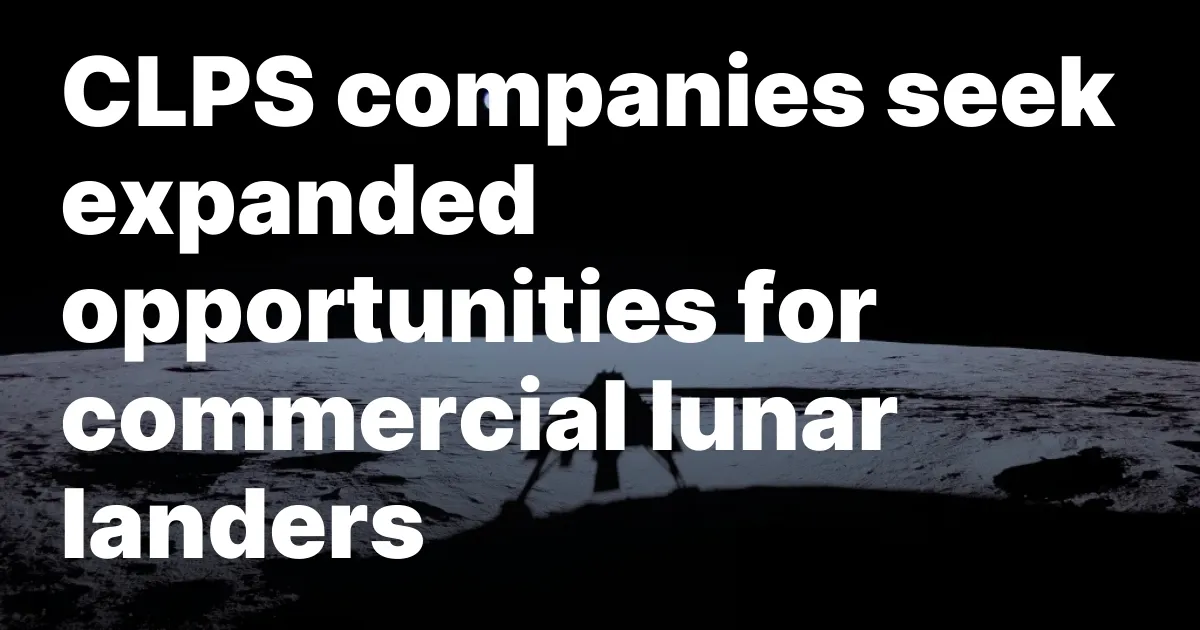
In a recent hearing held by the House Science Committee, lunar lander companies urged NASA to revise and broaden its approach to procuring services from them. This discussion comes at a time when lawmakers are questioning NASA's management of lunar missions, particularly the handling of the Volatiles Investigating Polar Exploration Rover (VIPER) mission.
During the hearing on April 1, executives from three companies involved in NASA’s Commercial Lunar Payload Services (CLPS) program shared their insights and suggestions for improvement. Jason Kim, the chief executive of Firefly Aerospace, emphasized the success of NASA's CLPS model, stating, “Together, we maximized efficiency in cost and schedule while minimizing risk to the taxpayer.” His company recently achieved a significant milestone with its Blue Ghost 1 lander successfully landing on the moon just a month ago.
Kim advocated for stable, multi-year funding commitments for the CLPS program, which he believes would facilitate a regular cadence of two to three lunar missions each year. He also highlighted the need for enhancing the supply chain critical for spacecraft production and recommended investments in spacecraft testing facilities and communication services essential for lunar operations.
As the original CLPS contracts are set to expire in 2028, companies are already considering the next phase, termed CLPS 2.0. John Thornton, CEO of Astrobotic, noted the importance of planning for this upcoming initiative, particularly after his company’s Peregrine lunar lander faced a propulsion malfunction shortly after its January 2024 launch, preventing a successful landing attempt. He suggested that NASA should pursue block buys of landers from firms engaged in current CLPS missions to maximize efficiency and cost savings.
Steve Altemus, president and CEO of Intuitive Machines, echoed Thornton's sentiments, advocating for block purchases as part of CLPS 2.0. His company has successfully landed two spacecraft on the moon, although they encountered issues that limited the data returned. Altemus also called for an expansion of the CLPS program to include the delivery of lunar infrastructure and to allow other government entities to order missions through CLPS, which could lead to enhanced innovation and reduced costs through shared investments.
Denevi stated, “Without congressional action to restore VIPER, it is likely that China will make the first landed measurements of ice on the moon and test methods for lunar resource utilization.” In defense of the cancellation, Nicky Fox, NASA’s associate administrator for science, explained that budget constraints made it impossible to support the VIPER mission without jeopardizing other future CLPS landers. NASA indicated that sustaining VIPER would require canceling or delaying multiple other missions within the program.
Rep. Zoe Lofgren (D-Calif.), the ranking member of the full committee, expressed dissatisfaction with NASA's explanations during the hearing, emphasizing that the project was terminated after it had already been completed. Fox countered that, at the time of the decision, VIPER was not fully complete due to ongoing testing. Denevi also highlighted the need for Congress to allocate funds for NASA's science and operations teams dedicated to VIPER, as they are at risk of disbandment, even if a company is selected to transport the rover.
She concluded by stressing the importance of balancing risk and reward in lunar exploration, stating, “We want to make sure it’s a balance, but still moving forward so that we have a chance to get to that rewarding science and exploration data.” As discussions continue, the future of NASA’s lunar missions and the overall effectiveness of the CLPS program remain pivotal topics for lawmakers and industry stakeholders alike.